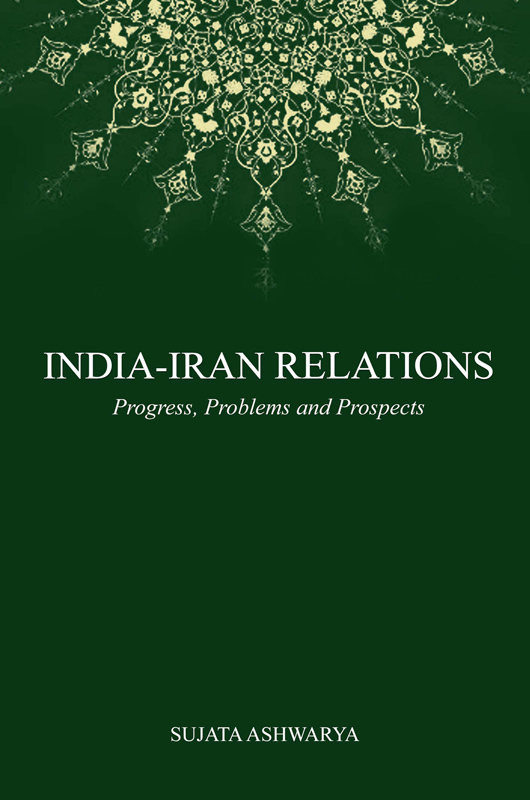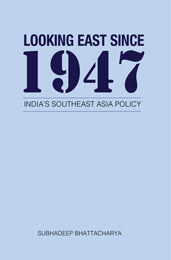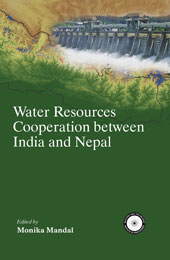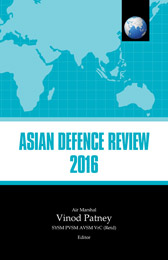This book examines India’s relationship with Iran since the post-World War II period and its unique search for meaningful bilateral ties in the West Asian region in the context of the changing regional and international scenarios. The four chapters highlight the achievements and constraints on the development of Indo-Iranian relations during the Cold War era; opportunities and limitations in bilateral engagements between India and Iran in the aftermath of the Cold War; impact of the ‘US factor’ on the development of crucial Indo-Iranian energy ties and the limitation imposed by India’s relations with Israel and Saudi Arabia on the India–Iran ties. More specifically, the four chapters touch on the central drivers—energy imports, access to Central Asia, cooperation in Afghanistan, mutual trade and economic investments and security ties—of India’s Iran policy, and how they structure India’s interaction with the other countries of the region and impact on the articulation of national interests. Combining a rich interplay of facts and figures with nuanced analyses, this volume will be a valuable resource for scholars, policymakers, diplomats and any interested reader desirous of knowing more about Indo-Iranian relations in particular and India’s West Asia policy in general.
Sujata Ashwarya
Sujata Ashwarya is Assistant Professor at the Centre for West Asian Studies, Jamia Millia Islamia, New Delhi. She received her MPhil and PhD degrees in West Asian Studies from Jawaharlal Nehru University, New Delhi. She was awarded fellowships for research at the Rothberg International School, Hebrew University of Jerusalem, Israel; Maison des Sciences de l’Homme (MSH) and Centre d’Etudes et des Recherches Internationales (CERI), Paris; and the Schusterman Centre for Israel Studies, Brandeis University, USA. She was also affiliated as a researcher at the Faculty of World Studies, University of Tehran, Iran. Her research interests include India’s West Asia policy, politics and foreign policy of Iran, Iraq and Israel, politics of energy, and issues relating to democratisation in the region. Her books, Civil Society, Democracy and State in West Asia (edited) and Essays on Iran and Israel: An Indian Perspective were published in 2010 and 2014 respectively.
Contents
Acknowledgements
Abbreviations
Tables, Figures and Maps
Introduction
I. The Cold War Years, 1947–1992
Baghdad Pact and the Pakistan Issue
The ‘Nasser Factor’
The Shah’s Dalliances with Islam
Superpower Detente and Iran’s Soviet Tilt
India’s Wars and the Iranian Response
Favourable Regional and International Developments
Initiation of Economic Ties, 1960s
The Shah’s Response to the Indo-Pak War, 1971
Upsurge in Ties post-1971
Iranian Offer of Aid and Investment, 1970s
Soviet Intervention in Afghanistan and the Iranian Revolution
Decline in Economic Ties, 1980s
2. The Post-Cold War Period: Opportunities and Constraints
Connectivity to Central Asia and Afghanistan
Access to Afghanistan and Development of the Chabahar Port
The Proposed Chabahar-Zaranj-Hajigak Rail Route
Issues of Terrorism and the Future of Afghanistan
Iran and Sunni Militancy
Afghanistan and the Continued Threat of the Taliban
Defence and Strategic Cooperation
Strengthening of Trade and Economic Ties
Non-Oil Trade and Investment
3. Energy Ties and the United States: The Iranian Nuclear
Imbroglio, Sanctions on Iran and the Vienna Deal
Progress in the India–US Relations
The Iranian Nuclear Imbroglio
India’s Response to Iran’s Nuclear Issue
UNSC and International Sanctions
India and the Sanctions on Iran
Implications for Energy Ties: Crude Oil Imports
Natural Gas Issues: IPI and TAPI Pipelines
Revival of the India–Iran Pipeline Project
LNG Supply and Investment in the Iranian Energy Sector
4. India’s Balancing Act: Iran, Israel and Saudi Arabia
Normalisation of the Indo-Israeli Relations
India’s Iran–Israel Conundrum
Israel’s Perception of the Iranian Nuclear Programme
Indo-Saudi Relations
India’s Saudi–Iranian Conundrum
Saudi Arabia’s Perception of Iran’s Nuclear Question
Challenges of the Emerging Scenario for India
5. Conclusion
Appendices
Select Bibliography


 Political Science
Political Science



